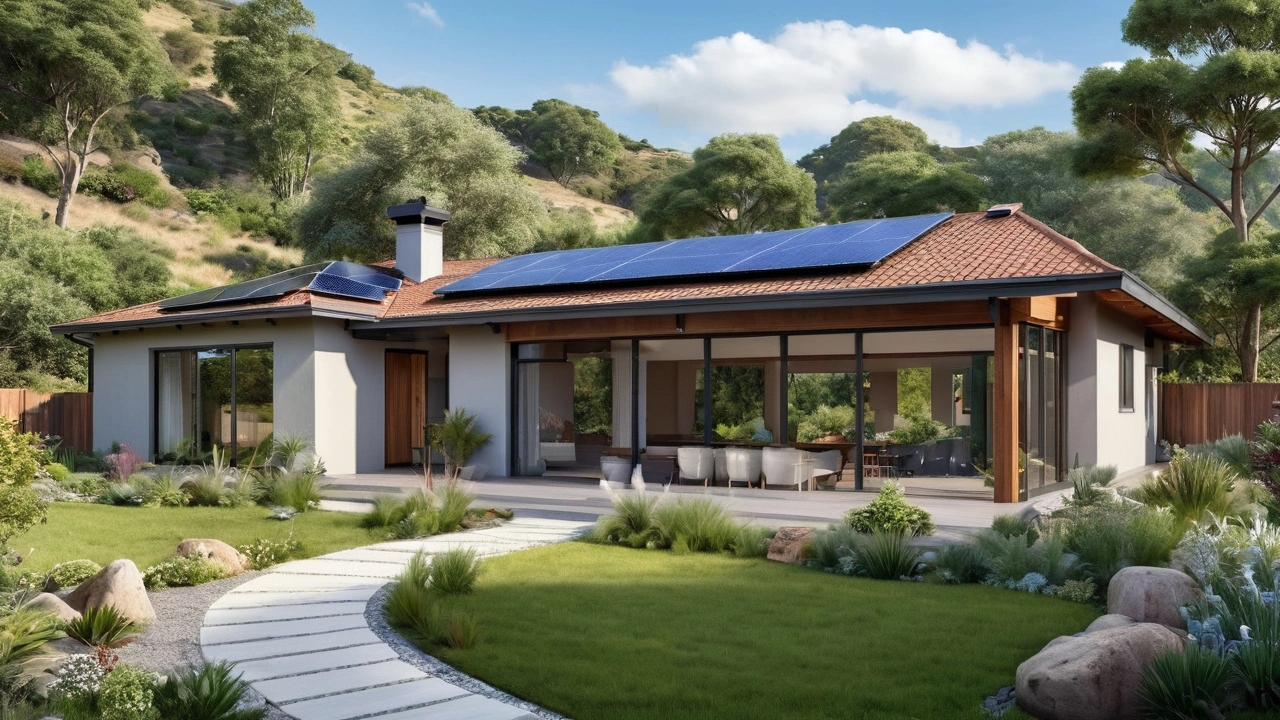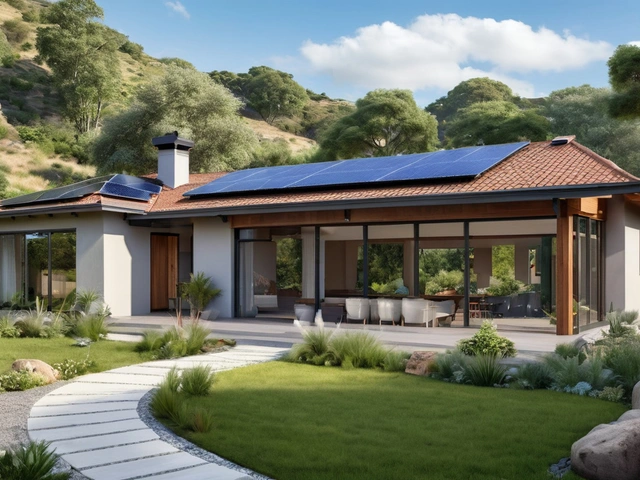Ranch-style homes, with their simple design and single-story layout, have become a favorite among homeowners looking for sustainable living options. These houses are not just aesthetically pleasing but also offer a host of eco-friendly benefits that make them a smart choice in today's environmentally conscious world.
In this article, we'll dive deep into what sets ranch-style homes apart. We'll explore their unique design features, discuss how you can implement sustainable practices, and share tips for making the most out of your eco-friendly home. Whether you're building a new house or renovating an old one, ranch-style homes offer the perfect blend of simplicity and sustainability.
- What Makes Ranch-Style Homes Unique
- Sustainable Features of Ranch-Style Homes
- Implementing Sustainable Practices
- Tips for Green Living in Ranch-Style Homes
What Makes Ranch-Style Homes Unique
Ranch-style homes stand out due to their distinctive architectural style, which emerged in the United States during the early to mid-20th century. These homes are characterized by their long, low, ground-hugging profile, which blends seamlessly with the surrounding landscape. This design was popularized by architect Cliff May, who sought to create homes that emphasized functionality and connected to nature.
One of the most notable features of ranch-style homes is their single-story layout. This design eliminates the need for stairs, making the homes accessible to people of all ages and mobility levels. It also allows for an open floor plan, which typically includes expansive living spaces that flow into each other without the interruption of walls. This open concept creates a spacious and airy feel, enhancing the home's connection to the outdoors.
Another defining feature of ranch-style homes is their large windows. These homes often boast floor-to-ceiling windows that offer unobstructed views of the outside world and flood the interior with natural light. This not only reduces the need for artificial lighting but also fosters a sense of harmony with nature. Sliding glass doors are also a common feature, providing easy access to patios, decks, or gardens.
Ranch-style homes are typically constructed with a mix of natural materials such as wood, brick, and stone. These materials not only contribute to the home's aesthetic appeal but also add to its energy efficiency. For instance, brick and stone have excellent thermal mass properties, which help regulate indoor temperatures by absorbing heat during the day and releasing it at night. This can lead to significant energy savings, especially in climates with extreme temperature fluctuations.
The simplicity of the ranch-style design makes it highly adaptable to various customization options. Homeowners can easily incorporate modern amenities and eco-friendly features without compromising the home's original charm. For instance, installing solar panels on the roof or integrating rainwater harvesting systems can be done seamlessly. According to real estate expert Jane Woods, "The versatility of ranch-style homes allows homeowners to effortlessly integrate modern sustainability practices, making them a timeless choice for eco-conscious living."
Another unique aspect of ranch-style homes is their emphasis on outdoor living. These homes often include expansive outdoor areas, such as covered patios, courtyards, and gardens. This design encourages homeowners to spend more time outside, enjoying the fresh air and natural surroundings. Many ranch-style homes also feature wrap-around porches, providing ample space for outdoor furniture and activities.
Ranch-style homes offer a perfect blend of simplicity, functionality, and connection to nature. Their unique features make them an ideal choice for those seeking a sustainable and comfortable living environment. Whether you are looking to build a new home or renovate an existing one, ranch-style homes provide a versatile and eco-friendly option that stands the test of time.
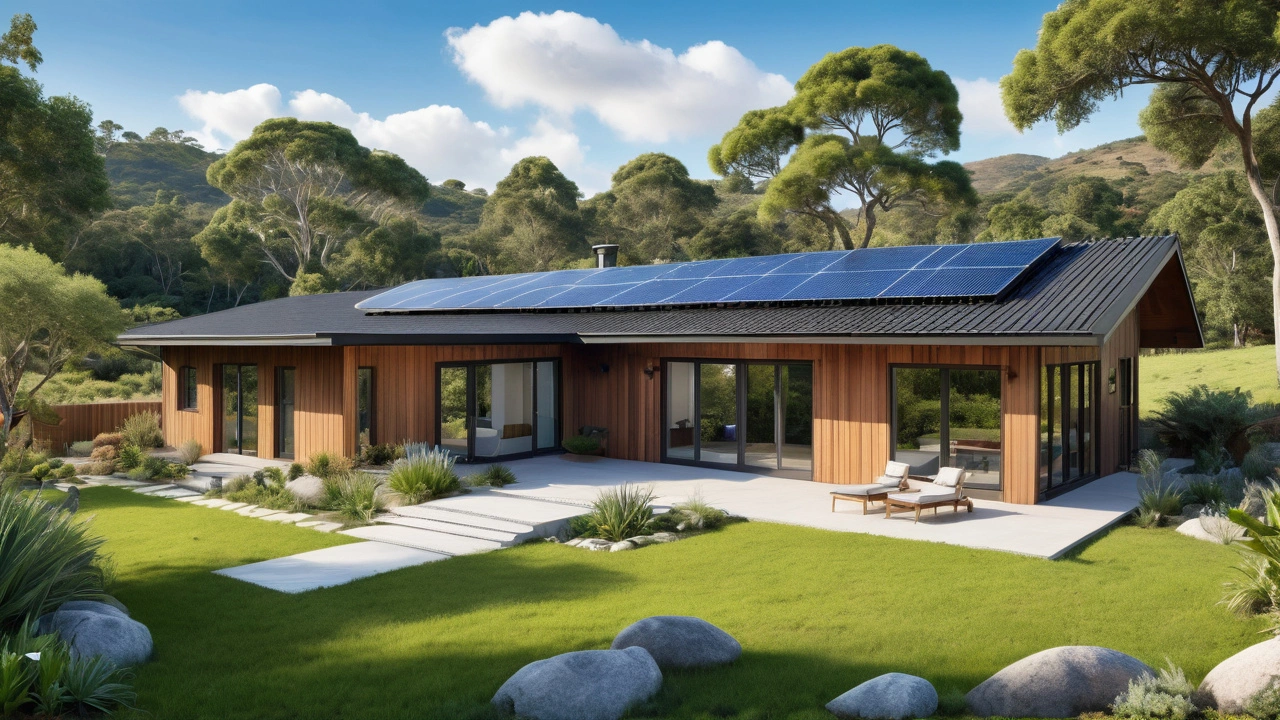
Sustainable Features of Ranch-Style Homes
Ranch-style homes offer numerous unique features that make them an ideal choice for those looking to embrace sustainable living. One of the primary benefits is their single-story design, which makes it easier to implement and maintain various eco-friendly elements. Lower stories mean less need for energy to heat and cool the home, as temperatures can be managed more efficiently without having to account for multiple stories.
Another critical feature is the large, expansive windows that are common in ranch-style homes. These windows allow ample natural light to flood the interiors, reducing the need for artificial lighting during the day. Additionally, these windows facilitate effective cross-ventilation, which can help maintain a comfortable indoor temperature and improve air quality naturally. By positioning windows strategically, you can harness the cooling power of breezes and reduce the reliance on energy-guzzling air conditioning units.
Speaking of positioning, the simple rooflines of ranch-style homes make them perfect candidates for solar panel installations. Flat or gently sloping roofs maximize the sun exposure, allowing for a higher efficiency of the panels. This not only creates an opportunity for homeowners to generate their own electricity but also potentially provides the ability to sell surplus power back to the grid, offsetting energy costs even further.
Ranch-style homes lend themselves well to rainwater harvesting, another practice that promotes sustainability. The design allows for an easy setup of gutter systems that can collect rainwater into storage containers. This harvested rainwater can then be used for various purposes such as irrigation, reducing the reliance on municipal water supply and conserving this vital resource.
Architect Delores Hayden once said, 'The ranch house celebrates the American landscape and brings a strong sense of the outdoors into the home.' This sentiment rings especially true when considering the sustainable features these homes can offer.
Let's not forget about recycled building materials. With their relatively simple construction, ranch-style homes can be effectively built or renovated using recycled or repurposed materials. From reclaimed wood for floors and beams to recycled glass for countertops, there are numerous ways to incorporate materials that reduce the environmental footprint. This practice not only minimizes waste but often imbues the house with unique character and history.
Energy efficiency is another hallmark. Ranch-style homes are often easier to insulate effectively due to their straightforward design. Quality insulation can maintain enjoyable temperatures throughout the year with less energy consumption. It also fortifies the home against heat loss in the winter and heat gain in the summer, making your living space more comfortable and your energy bills more predictable.
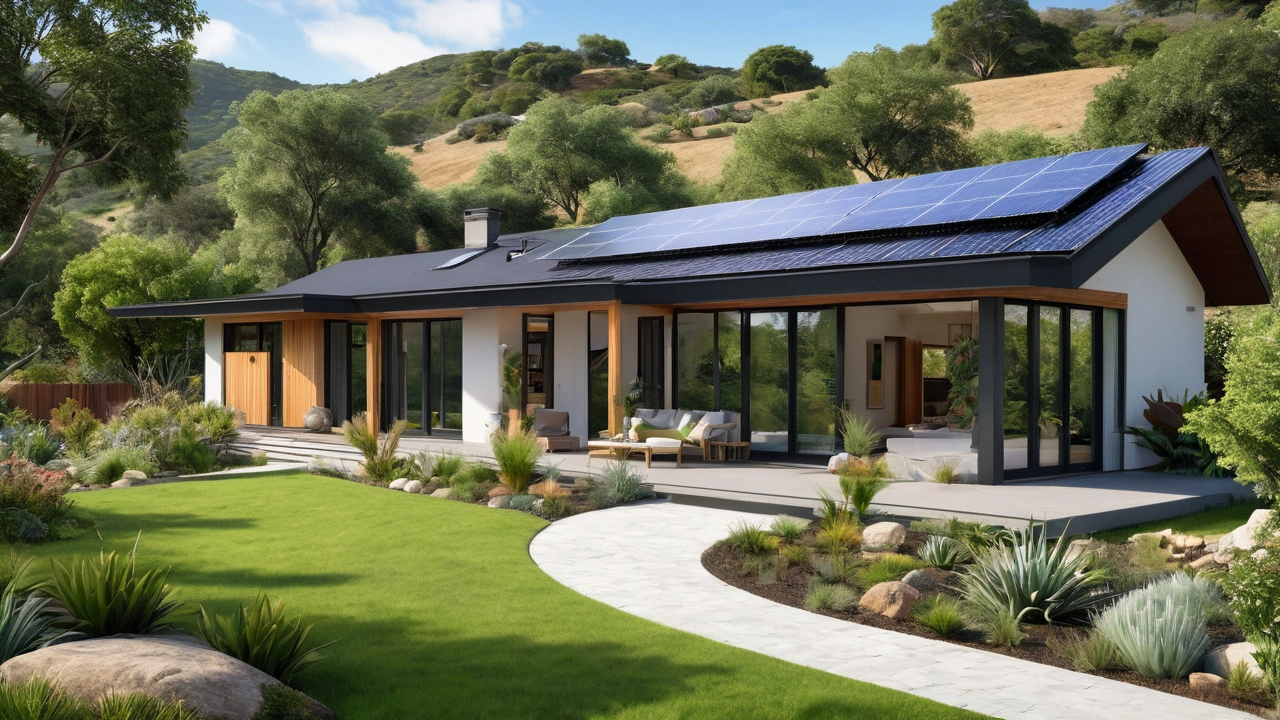
Implementing Sustainable Practices
When it comes to making your ranch-style home more sustainable, there are several practical steps you can take to reduce your environmental footprint. One of the most effective ways to start is by enhancing energy efficiency. Given their single-story layout, ranch-style homes are perfect candidates for the installation of *solar panels*. These panels can generate enough energy to power your home, significantly lowering electricity costs and reducing reliance on non-renewable energy sources. Additionally, well-isulated walls and energy-efficient windows can prevent heat loss in winter and keep your home cool in summer, thereby reducing the need for heating and air conditioning.
*Rainwater harvesting* is another sustainable practice that can be easily integrated into a ranch-style home. With a sloped roof, it's simple to install gutter systems that direct rainwater into large storage tanks. This collected water can be used for watering gardens, flushing toilets, and even washing clothes, helping to cut down on the amount of treated water your household uses. According to a report by the Environmental Protection Agency, “An effective rainwater harvesting system can save up to 1,300 gallons of water during peak summer months.”
To fully embrace sustainable living, consider incorporating *green building materials* in your home. Reclaimed wood, recycled steel, and bamboo are fantastic options that are not only eco-friendly but also add a unique aesthetic touch to your home. These materials often have a lower environmental impact compared to traditional building materials. For flooring, options like cork or linoleum are both sustainable and durable, offering an alternative to conventional hardwood floors.
A *focus on landscaping* can also contribute to the sustainability of a ranch-style home. Native plants, which require less water and fewer pesticides, can create a beautiful and low-maintenance yard. Xeriscaping, a landscaping method that reduces the need for irrigation, is particularly suited to areas with dry climates. This technique can significantly cut down on water usage and promote a healthier, low-maintenance garden.
Finally, embracing *smart home technology* can play a crucial role in implementing sustainable practices in your ranch-style home. Smart thermostats, energy-efficient appliances, and LED lighting are simple to install and can lead to significant energy savings. These technologies allow you to monitor and control your energy usage in real-time, making it easier to make informed decisions that benefit both your wallet and the environment. A study by the American Council for an Energy-Efficient Economy found that smart home devices can reduce energy consumption by up to 15%.
Taking Small Steps, Making Big Changes
Implementing sustainable practices in your ranch-style home doesn't have to be overwhelming. Start with small, manageable changes and build from there. Maybe you'll begin with energy-efficient light bulbs and then graduate to solar panels. Every step you take makes a difference, contributing to a healthier home and a healthier planet.
“The journey of a thousand miles begins with one step.” — Lao Tzu
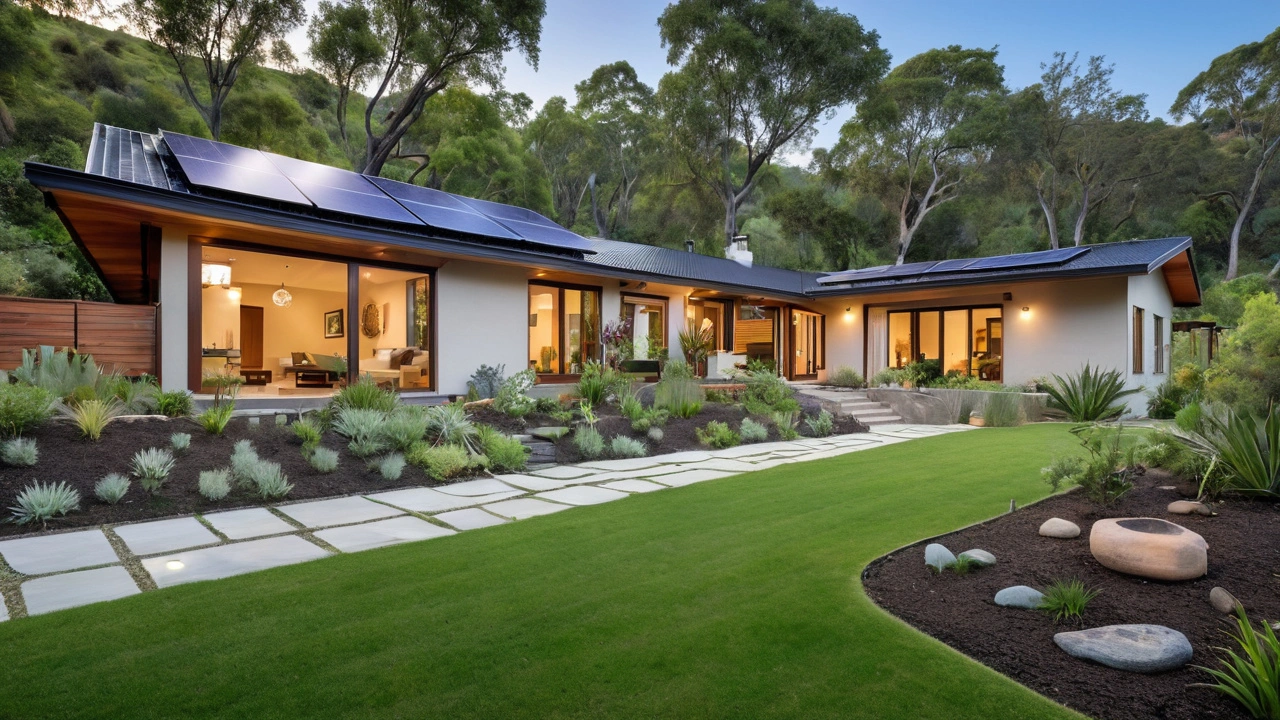
Tips for Green Living in Ranch-Style Homes
Living sustainably in a ranch-style home involves making the most out of its simple, open layout. One of the top ways to enhance the green potential of your home is through energy-efficient improvements. Insulation is crucial; with the expansive roofline typical of ranch-style homes, ensuring your attic and exterior walls are well-insulated can make a huge difference in maintaining a stable indoor temperature.
Install solar panels on that wide roof. It's perfect for capturing sunlight, reducing your dependence on non-renewable energy sources. Today's solar panels are more efficient and more affordable than ever. In fact, the average American household could save thousands of dollars over the lifespan of their solar panels.
"The potential for solar energy is remarkable. Roof-mounted systems could supply about 40% of the electricity needs in the United States," according to the Union of Concerned Scientists.
Another crucial aspect of green living is water conservation. Ranch-style homes often sit on larger plots, providing ample opportunities to collect rainwater. You can use simple rain barrels or more sophisticated systems for capturing and storing rainwater, which can then be used for landscaping or even inside the home with proper filtration.
Think about landscaping. Native plants are well-adapted to local conditions and require less water and maintenance. Incorporating drought-resistant plants into your yard is a smart way to conserve water. Consider creating a rain garden, which uses rainwater runoff from roofs, driveways, and other surfaces to nourish specially-selected plants that can handle both wet and dry conditions.
Another excellent green living tip is to use energy-efficient appliances and lighting. Switching to LED bulbs can significantly lower your energy consumption. They use at least 75% less energy and last up to 25 times longer than incandescent lighting. For appliances, look for Energy Star-rated products which meet strict energy-efficient criteria set by the EPA.
When renovating, consider using sustainable materials such as recycled wood, bamboo, or metal for your floors, countertops, and other home features. Reclaimed materials not only reduce the demand for new resources but also add a unique charm to your home. Low-VOC (volatile organic compounds) paints and finishes are also better for your health and the environment.
Lastly, integrate smart home technology. Programmable thermostats, smart lighting, and energy monitors can help you keep track of your energy use and find more ways to cut back. These technologies are getting smarter and more intuitive, making it easier for you to live sustainably without even realizing it.

